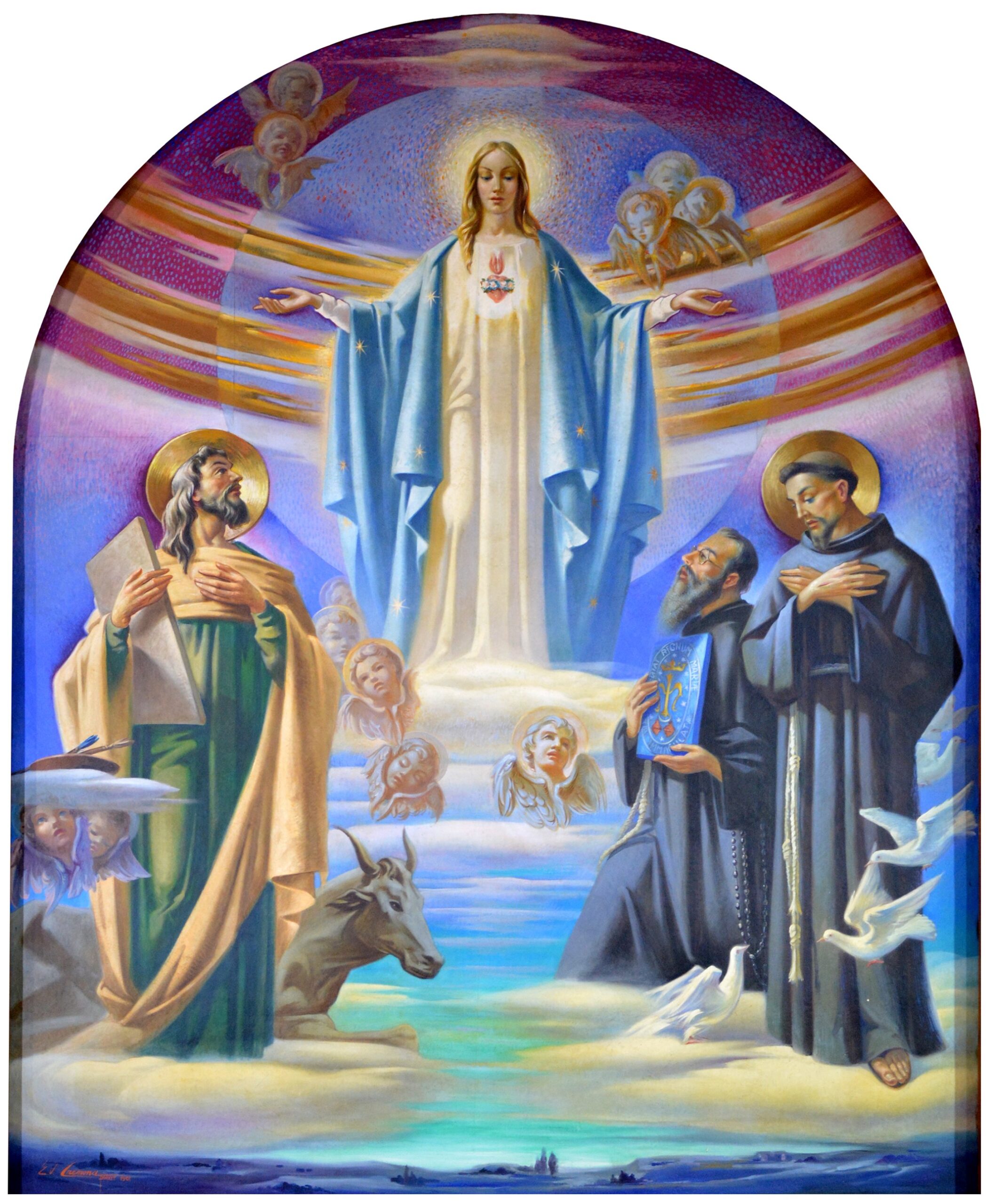
You are all beautiful, Mary
Second reflection about the painting of the Immaculate Heart of Mary, Burmarrad
You are all beautiful, Mary,
and the stain of original sin is not in you.
You are the glory of Jerusalem,
You are the joy of Israel,
You give honour to our people.
You are an advocate of sinners. O Mary,
Virgin most intelligent,
Mother most merciful.
Pray for us,
Plead for us,
To the Lord Jesus Christ.
In this titular painting, Mary looks youthful, beautiful, just as the Franciscan Family have chanted to her down the centuries “Tota pulchra es, Maria, et macula originalis non est in te”—You are all beautiful, Mary, and the stain of original sin is not in you. We see in glory the one to whom the Church has, since olden times, ascribed the words in the Song of Songs and which are echoed in the Book of Revelation.
“Who is this that looks forth like the dawn,
fair as the moon, bright as the sun,
terrible as an army with banners?”
Song of Songs 6: 10
Standing to her right, St Luke is gazing admiringly at Mary with a canvas panel in his hand; two little angels are holding aloft the necessary painter’s materials nearby. St Luke accompanied St Paul on his journey to Rome and his providential shipwreck in Malta, such that he writes the account we find in the Acts of the Apostles in the first-person plural. St Luke is also co-patron of the Burmarrad parish.
According to a legend dating back to at least the fifth century AD, St Luke painted an image of Mary on the surface of a table St Joseph had made and which she carried with her when St John took her into his home. Hung on the Cross, Jesus entrusted Mary into John’s care and, along with him we too were entrusted to Mary’s care. While delicately crafting this work of art, St Luke would listen to Mary recounting the events of her own and of Jesus’ life. He was thus able to bequeath us the most beautiful icon of Mary in the form of the detailed account of the Annunciation by the Archangel Gabriel that the evangelist composed so masterfully.
Mary wishes to do the same today on the canvas that is our life. She wants to narrate anew the story of Jesus, so that those events come back to life and are drawn on our life’s canvas. Our life is certainly no masterpiece: we are all too aware of those dark corners and of the rough brushstrokes of our love that is not always pure and true. Fortunately, however, amid our own coarse brushstrokes, there are also the Master’s strokes. The more we pause and listen to him, the more we take time to listen to Mary telling us about the things she treasured up and pondered in her heart until they were completely fulfilled, the more our own life’s tapestry will shine with that heavenly brightness which alone can overpower the darkness caused by heart break, solitude, alienation, deception, injustice, sorrow, and sadness. We ought to let her narrate our story, not as we see it from our own perspective—as a catalogue of failure or of dishonestly achieved successes—but through the lens of grace that admonishes and forgives, opening wounds—even old and deep ones—to heal them and turn them into living springs.



